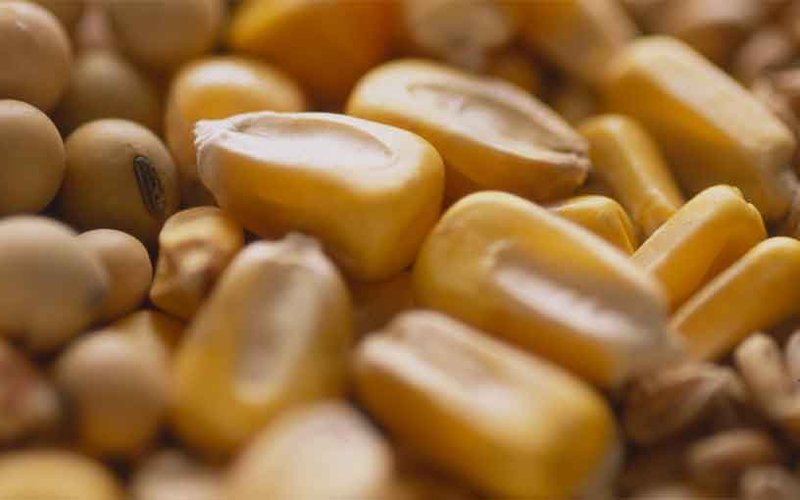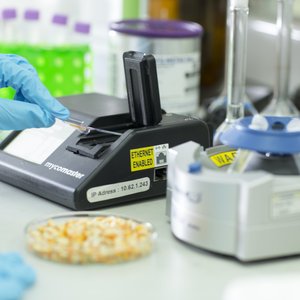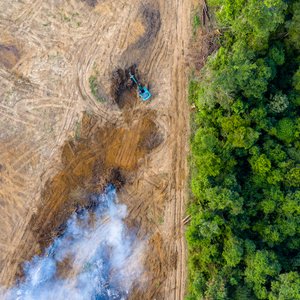Cargill's 2022 World Mycotoxin Report contains more than 300,0000 mycotoxin analyses taken from 150 feed plants, on-farm samplings and storage locations. The report provides information on the most problematic mycotoxins with their level of contamination and performance risk rates, and species sensitivity when exposed to a given mycotoxin.
“Our aim is to make the most comprehensive and trusted information available on mycotoxin risk to help livestock farmers protect the health of their animals and operations,” said Gilles Houdart, global additive category director for Cargill's animal nutrition business. “With the Cargill World Mycotoxin Report, farmers and feed producers can directly benefit from Cargill’s unique global footprint of animal nutrition expertise.”
Global trends
Contamination is the rule. In 2022, 75% of the more than 300,000 mycotoxin analyses conducted were positive and above detection limits. Also, the more mycotoxins you test for, the more you will find. For example, of samples tested for six mycotoxins, 84% were positive for four or more mycotoxins.
Performance risk rates increased. Beyond the number of positive samples, it is important to consider contamination levels that may create a risk of reduced performance. For example, in 2022, 39% of analyses were above the performance risk threshold, representing a 4% increase from 2021.
Fumonisin (FUM), Vomitoxin (DON) and Zearalenone (ZEN) remain the top three mycotoxins of concern. Over the past year, ZEN analyses above performance risk increased to 51% while FUM and DON remained elevated at 40% and 62%, respectively.
Ingredient trends
Seventy-five percent of corn-based ingredients (including all byproducts) analyses were positive for at least one mycotoxin, and 39% were above performance risk thresholds. DON (63%), ZEN (55%), FUM (44%), and T2 (33%) were most frequently above performance risk levels in corn group analyses.
Eighty-one percent of cereal-based ingredients analyzed were positive for at least one mycotoxin, and 44% were above performance risk thresholds. In 2022, DON (66%), ZEN (31%), T2 toxin (T2) (28%), and Aflatoxin (AFL) (25%) were most frequently above performance risk levels in cereal group analyses.
Sixty-eight percent of oilseeds-based ingredients analyses were positive for at least one mycotoxin, and 22% were above performance risk thresholds. ZEN (64%), T2 (24%), and AFL (15%) were most frequently positive among analyses and presented the highest over-performance risk thresholds. Oilseeds had the lowest contamination concern.
Regional trends
Regions with the highest mycotoxin prevalence and risk levels include China, Asia, North America, and Europe. Conversely, the Middle East and Africa (MEA), Central and South America, and Russia show lower risk, though Russia (+11%) and MEA (+9%) have increased overall risk rates.
In Asia, AFL remained the highest risk in cereals and FUM in corn-based ingredients.
In Central and South America, mycotoxins from Fusarium molds (ZEN, FUM, DON) represented significant risks for corn and cereals-based ingredients.
In China, the main concern was DON, ZEN and FUM in corn, DON and ZEN in cereals and ZEN in oilseeds.
In North America, DON remained a concern in corn and ZEN levels increased, particularly in the Northeast corn belt. FUM levels remained high in the Southern corn belt.
In Europe, DON still represented a high risk in cereals and corn-based ingredients. ZEN risk also increased in oilseeds.
In MEA, an increased overall risk with a 9% jump in the region from 2021. Substantial increases in ZEN, T2, FUM, and DON, to a lower extent, particularly in corn.
Russia remains the region with the lowest mycotoxin rate. However, in 2022, an 11% increase was observed from 2021. T2, DON and ZEN contamination rates all doubled.
Impact calculator
In addition to the risk management data provided in the report, Cargill can help to answer this critical question: What is the right approach to manage mycotoxins for my operation?
As a user and producer working alongside customers around the globe, Cargill developed a first-of-its-kind Mycotoxin Impact Calculator (MIC) to address this question. This in-house tool is the latest in Cargill's toolbox to help customers identify and mitigate mycotoxins with data-backed insights to maximize performance and outcomes for animals and producers' bottom line.
“Our customers need real-time actionable data to help them make sound decisions for their business. Thanks to our data centralization efforts and decision-making tools, Cargill helps characterize mycotoxin risk for each situation to adopt the appropriate solution,” said the author of the report, Clement Soulet, global additive category manager for Cargill's animal nutrition business.
The complete 2022 World Mycotoxin Report can be found here.










